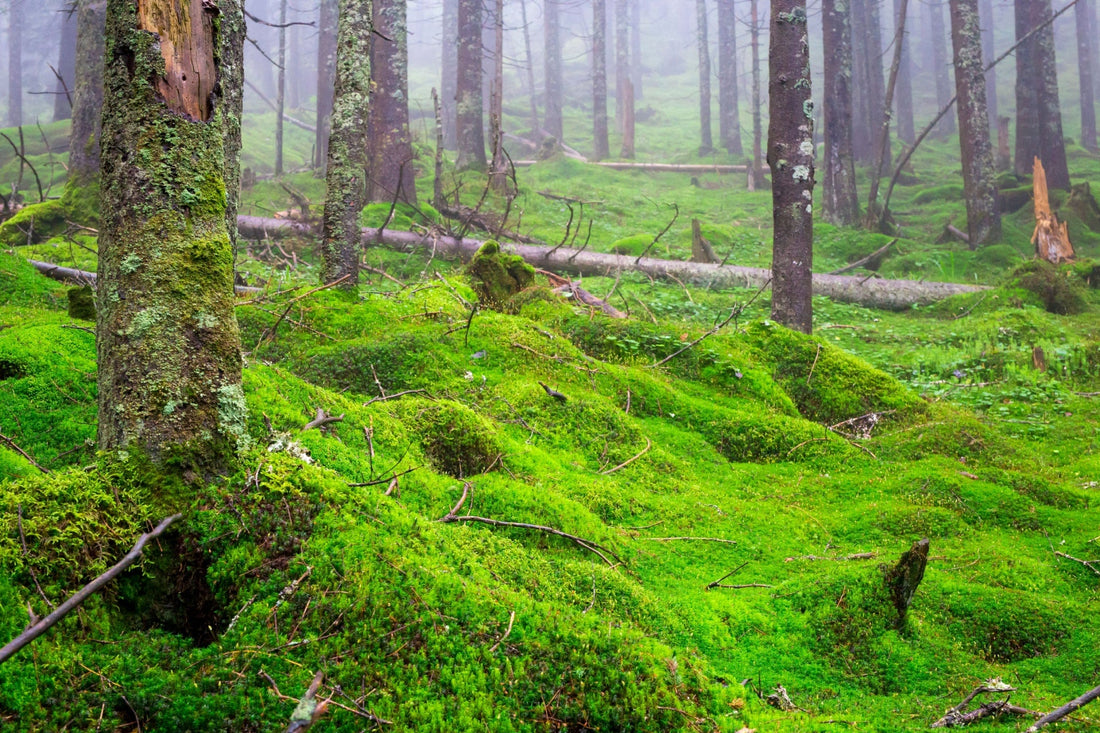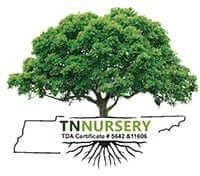
Why Carpet Moss Is the Secret Weapon for Native Plant Gardens
Share
When creating a peaceful native garden that provides beauty and habitat, native moss often gets overlooked, but it shouldn’t be. Carpet moss (Leucobryum glaucum) is a native plant powerhouse. Native to North America and found in moist woodland settings, this low-maintenance plant is one of the best native plants for your space. Whether you are trying to restore a woodland habitat or soften the look of stone paths and garden beds, this moss will do the trick.
Native mosses have been gaining popularity in the past few years at TN Nursery, with interest from both professional landscape designers and homeowners alike. What’s so great about them? Native plants and mosses go hand in hand in creating a healthy and resilient habitat that supports local pollinators.
The Low-Key Beauty of Carpet Moss
Carpet moss gets its name from the way it blankets the soil with plush green groundcover in the form of round mounds or flat surfaces depending on the soil moisture and light. This low-maintenance native plant is often used in shady gardens, Japanese designs, between stepping stones, and even in terrariums. What’s so special about this moss? It’s flexible. While carpet moss prefers acidic, well-drained soil and shady conditions, it can tolerate brief periods of sun and dry times once established.
Native mosses are a great way to create a low-maintenance landscape that still attracts and provides for local pollinators. Unlike invasive or exotic plants, this moss will not spread or overwhelm native plants—it’s just a silent guardian of the garden bed, slowly creating a healthy layer over spaces that might otherwise be taken over by weeds or washed away by water.
Why Native Plant Lovers Are Drawn to Carpet Moss
This plant works beautifully in combination with native ferns, wildflowers, and understory shrubs. Think planting carpet moss alongside Christmas ferns or between clumps of trillium, bloodroot, or wild ginger. These native woodland plants also enjoy similar cool, shady, moist growing conditions as carpet moss.
Native mosses have another critical role to play in the environment. They stabilize the soil, absorb moisture, and harbor beneficial microbes that benefit the native plants. According to the Department of Plant Science at North Carolina State University, mosses can also act as living mulch, conserving moisture and preventing soil erosion naturally.
Native plants and pollinators need groundcover, and when they do exist, it should be as beautiful as it is functional. If you’re planting a pollinator-friendly garden, adding moss as an underlayer helps increase biodiversity by creating a space for beneficial insects and groundcover that will help native plants and wildlife thrive. Carpet moss may not be a showy bloomer, but it helps everything else around it grow.
Where to Use Carpet Moss
Carpet moss is an extremely versatile native plant and can be creatively applied in several ways:
Between pavers or stepping stones: Fill the void between them while reducing mud, mowing, and mowing in general.
Under native trees: Especially when there are native trees like Red Maple or Eastern Hemlock and native groundcover, such as woolly sedge, native gill-o-weed, and so on, where grass won’t grow.
Rock gardens: These plantable rocks or boulders can be softened with a groundcover that complements them well.
Native plants that are deer-resistant: Even when placed near natives that attract deer, they will not be as much of a target.
Carpet moss softens the look of rocks, boulders, and plantings in the garden, especially when combined with native sedges and small native ferns.
Regardless of where you use it, carpet moss will add texture and depth while requiring little to no maintenance and never needing to be mowed, fertilized, or watered regularly.
How to Establish Carpet Moss in Your Landscape
If you are starting from scratch, you should know that native moss isn’t planted like traditional nursery plants are. It’s simply pressed or pinned directly to the soil surface. Here’s how to install carpet moss:
Roughen the soil slightly to give the moss something to grab onto.
Mist the soil surface lightly and press the moss into place.
Water the surface regularly for the first two weeks to ensure the moss stays in place and starts to grow.
You can order fresh and ready-to-plant carpet moss from the TN Nursery carpet moss product page. We sell native moss in bare root form, and it is premium quality and sustainably harvested.
Native Plant Companions That Love Carpet Moss
For the best native plant display and ecological impact, plant carpet moss with these native plants:
Christmas Fern: An evergreen native plant that provides year-round interest and a perfect counterpoint to mossy textures.
Wild Ginger: A native groundcover with heart-shaped leaves and deep root systems that stop erosion.
Trillium: A native spring wildflower that blooms before trees leaf out and creates a magical display early in the season.
Solomon’s Seal: Plants with arching stems and dangling white flowers that provide a vertical accent to carpet moss.
Together, these natives will create a cohesive, layered woodland garden that provides habitat for pollinators and beneficial insects.
The Lowdown on Moss in Native Landscapes
As more gardeners lean toward sustainable native plant designs, native moss is enjoying a comeback. It fits right into rain gardens, permaculture landscapes, and even restoration efforts. It’s also loved in meditation and sensory gardens where texture and subtlety are key.
Native plants and pollinators ned a home in the landscape, but so does native moss. It supports the whole system from the ground up, absorbing moisture, trapping it in the soil, and providing beauty and shelter for native plants. It’s also deer-resistant and extremely low-maintenance, making it ideal for suburban and rural garden beds alike.
Carpet moss isn’t just a soft green blanket. It’s an essential part of a healthy native landscape. It cools the soil, conserves moisture, and blends beautifully with native plants. In an era when we’re reconsidering how we garden with less turfgrass and more intention, this unassuming moss is quietly leading the way. Whether you’re creating a serene woodland garden or want an alternative to mulch or grass, it’s worth adding carpet moss to your garden.
Want to learn more about native mosses and their place in sustainable landscaping? Check out the Carpet Moss category in TN Nursery, and see how your garden can get greener (literally and figuratively).
